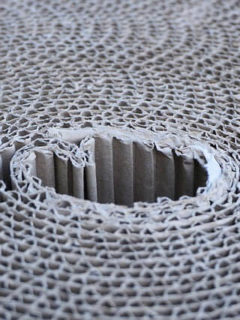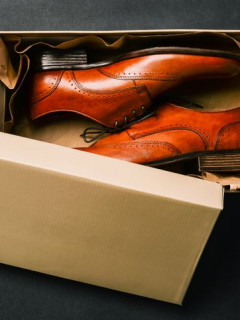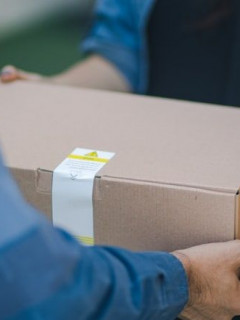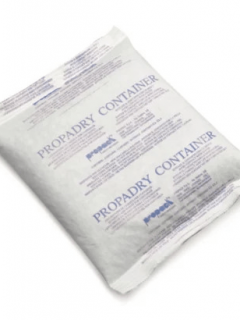The safe and correct storage of packaging in warehouses is an important part of logistics, e-commerce. An essential tool for wholesalers, online shops or removal companies are cardboard boxes – whether filled or still empty. Storing them properly requires a certain amount of knowledge – the wrong storage method can cause these boxes to lose their protective properties. Under what conditions and how to store cardboard boxes in a warehouse?
Not only cardboard boxes. What packaging is used in logistics?
There are many types of packaging that are used in warehouses to transport goods. The most common are cardboard boxes, sacks and plastic bags.
Corrugated cardboard boxes deserve special attention because they have good technical properties. The thicker the material, the better the strength, stability and durability (we are talking about 5-layer and 7-layer corrugated cardboard). Cartons with a strong weave are difficult to damage during handling.
Plastic bags and pouches are ultimately intended for the transport of loose products. The most important thing is that they are tightly sealed. They have no additional internal or external protection, so it is better not to transport sensitive, fragile or glass items in them (they are not resistant to mechanical damage).
Various papers and films are also associated with packaging in warehouses. Sometimes these take the form of packaging (simply surrounding the package with them). They can also be used as a filling for parcels, an extra layer of protection. They protect against dirt, crushing and shocks.
Customised warehouse packaging
In addition to these, cylindrical drums, cages, pallets, containers and tanks are used in warehouses. The former take the form of wooden, metal or plastic containers, designed to carry liquid cargo. They are most often smooth or corrugated. They are cylindrical in shape. Sometimes they have special holes in the top – when the substance that fills the interior ferments.
Cages are used for transporting animals and therefore must meet special requirements – the presence of a solid floor, the right distance between the boards, and the strength of the structure. Pallets, which are indispensable in warehouses, vary in size, number of boards. The most durable ones, even after repeated use, do not have cracks, abrasions or other obvious damage. Containers and cisterns are designed for the transport of dangerous goods. They are divided into universal (for unit shipments) and specialised (only for the most dangerous substances).
How do I store cardboard boxes in the warehouse?
There are two ways of storing cartons in a warehouse. The first method is storage in a staggered form, while the second method is storage in a folded form (usually recommended). The basic recommendations for the storage conditions of cardboard boxes concern temperature and humidity.
How does humidity affect the quality of a cardboard box?
Every entrepreneur who has a warehouse should remember to monitor the humidity in that room (the index is supposed to be between 25% and 75%). Even slight fluctuations above or below this level can impair the quality and durability of the cartons in the warehouse. This is because corrugated cardboard is a hygroscopic material – as moisture increases, it absorbs it. As moisture increases, the stiffness of the cardboard decreases by up to a factor of 2. Much depends on the properties (cardboard made of well-bonded blanks has a higher resistance to moisture than cardboard made of unbonded blanks). Even a small addition of non-glued components in the paperboard structure can lead to a lower stiffness.
It is worth mentioning that a device exists which helps to measure the moisture in cardboard boxes – this is the contact moisture meter (also known as a moisture indicator).
How does temperature affect the quality of a cardboard box?
The optimum temperature in the warehouse is another issue that the entrepreneur should keep in mind. It is generally agreed that it should be between -14 and 40 degrees Celsius. Medium corrugated board can – in general – be stored at around 20 degrees Celsius.
What else is worth knowing about how to store cardboard boxes in a warehouse? Cardboard boxes should not be located near draughts, windows, heating or cooling devices. The distance between heating devices and boxes must be at least 1 m. Critical situations arise when moving a carton from a cold to a warm environment. Various precautions count. The most important of these are: storing the boxes according to the manufacturer’s recommendations, wrapping the boxes in moisture-resistant material (e.g. stretch film) beforehand. The removal of the foil does not take place immediately, but only when the material is close to room temperature (temperature equilibrium).
Techniques for storing cartons in the warehouse
The folding of cartons has the important advantage that they take up only a fraction of the space. While smaller cartons can be in staggered (unfolded) form, large boxes are better folded – this saves more space. The free cubic metres can be used for other purposes. Folded cardboard boxes are also a significant disadvantage – they lose their elasticity with each folding process. Remember, therefore, that opening and closing corrugated cardboard packaging too hard will shorten its service life. And another important rule of thumb: cartons should only be folded when they are fully dry.
Under storage conditions, cartons for professional use can last for about six months – after that, the material becomes unstable and can be damaged, e.g. due to heavy loading. This rule is not likely to apply to private use.
Rules for storing cardboard boxes in a warehouse
Different rules apply to cardboard boxes that fit on the floor and those on storage racks. In the first case, when stacking boxes, a maximum load is advisable (the height of the entire stack should not exceed 3 m). Full boxes should be sealed with adhesive tape. When folding unfolded cardboard boxes, remember that there are no empty spaces in the middle – otherwise the box may become deformed. Cardboard packaging on pallets must not move sideways or out of position. Pallet pads are used to prevent shifting.
Every warehouseman also knows how to store empty cardboard boxes in the warehouse. They are most often placed on steel storage racks. Importantly – the boxes must be folded (or at least those that will not be used in the near future). Read: How do you fold cardboard boxes?
In the warehouse, it is also worth taking care of segregation, i.e. division by size (into large, medium, small cardboard boxes). Knowing where the matching cardboard boxes are located will streamline daily work. The warehouseman will not have to manoeuvre between the different racks in search of a box of the desired size. Damaged or unusable cartons are shredded. They can be repurposed (becoming eco-friendly parcel fillers) or disposed of. Check: What is the process of recycling cardboard boxes?
Good quality, durable and long-lasting cardboard boxes – only at RAJA
In the RAJA online shop you can find most of the packaging used in warehouses. Thus, there is no shortage of cardboard boxes (e.g. cardboard tubes, cardboard boxes with automatic bottom, height-adjustable, reinforced, flat) and other packaging products: courier and deposit envelopes, foil packs, bubble envelopes, packing paper, stretch foil.
All packaging is waterproof and environmentally friendly – no surprise, the RAJA company has ecology and environmental protection as one of its main goals, which sets it apart from other packaging companies.














